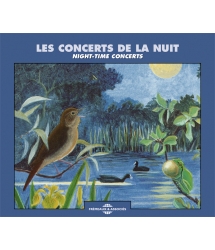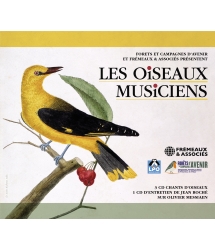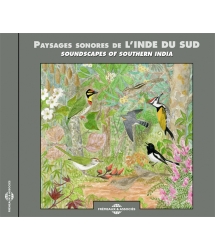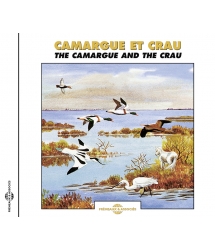- Our Catalog
- Philosophy
- Philosophers of the 20th century and today
- History of Philosophy (PUF)
- Counter-History and Brief Encyclopedia by Michel Onfray
- The philosophical work explained by Luc Ferry
- Ancient thought
- Thinkers of yesterday as seen by the philosophers of today
- Historical philosophical texts interpreted by great actors
- History
- Books (in French)
- Social science
- Historical words
- Audiobooks & Literature
- Our Catalog
- Jazz
- Blues
- Rock - Country - Cajun
- French song
- World music
- Africa
- France
- Québec / Canada
- Hawaï
- West Indies
- Caribbean
- Cuba & Afro-cubain
- Mexico
- South America
- Tango
- Brazil
- Tzigane / Gypsy
- Fado / Portugal
- Flamenco / Spain
- Yiddish / Israel
- China
- Tibet / Nepal
- Asia
- Indian Ocean / Madagascar
- Japan
- Indonesia
- Oceania
- India
- Bangladesh
- USSR / Communist songs
- World music / Miscellaneous
- Classical music
- Composers - Movie Soundtracks
- Sounds of nature
- Our Catalog
- Youth
- Philosophy
- News
- How to order ?
- Receive the catalog
- Manifesto
- Dictionnary











- Our Catalog
- Philosophy
- Philosophers of the 20th century and today
- History of Philosophy (PUF)
- Counter-History and Brief Encyclopedia by Michel Onfray
- The philosophical work explained by Luc Ferry
- Ancient thought
- Thinkers of yesterday as seen by the philosophers of today
- Historical philosophical texts interpreted by great actors
- History
- Books (in French)
- Social science
- Historical words
- Audiobooks & Literature
- Our Catalog
- Jazz
- Blues
- Rock - Country - Cajun
- French song
- World music
- Africa
- France
- Québec / Canada
- Hawaï
- West Indies
- Caribbean
- Cuba & Afro-cubain
- Mexico
- South America
- Tango
- Brazil
- Tzigane / Gypsy
- Fado / Portugal
- Flamenco / Spain
- Yiddish / Israel
- China
- Tibet / Nepal
- Asia
- Indian Ocean / Madagascar
- Japan
- Indonesia
- Oceania
- India
- Bangladesh
- USSR / Communist songs
- World music / Miscellaneous
- Classical music
- Composers - Movie Soundtracks
- Sounds of nature
- Our Catalog
- Youth
- Philosophy
- News
- How to order ?
- Receive the catalog
- Manifesto
- Dictionnary
ISERE - NATURAL SOUNDSCAPES
PIERRE PALENGAT
Ref.: FA672
Artistic Direction : PIERRE PALENGAT
Label : Frémeaux & Associés
Total duration of the pack : 1 hours 13 minutes
Nbre. CD : 1
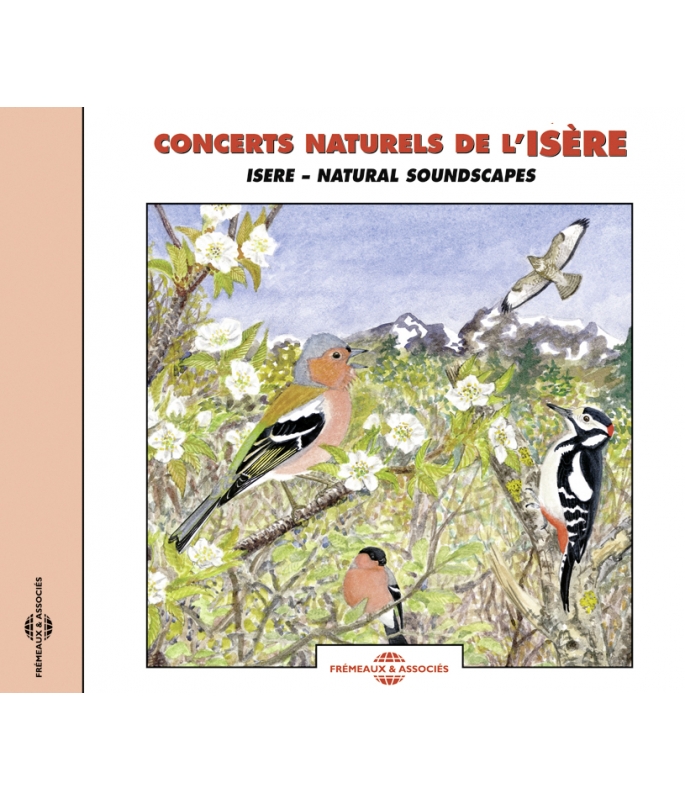
ISERE - NATURAL SOUNDSCAPES
ISERE - NATURAL SOUNDSCAPES
“The stars of this CD are the birds. Often discreet, whether migrants or residents, it’s in the spring when looking for a mate and nesting that the different species’ songs are at their height. Each bird then tries to make itself heard above the general chorus in woods, fields and gardens.” Pierre Palengat
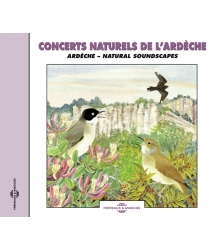
ARDECHE - NATURAL SOUNDSCAPES
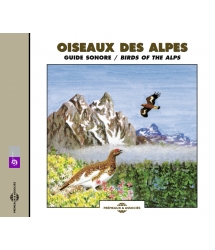
BIRDS OF THE ALPS - SOUND GUIDE
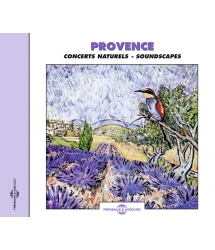
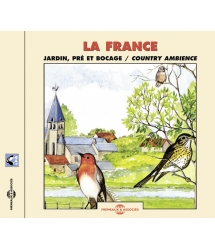




-
PisteTitleMain artistAutorDurationRegistered in
-
1Pouillot véloceCommon Chiffchaff (Phylloscopus collybita)00:00:572004
-
2Pigeon ramierWood-Pigeon (Columba palumbus)00:00:572004
-
3Rougegorge familierRobin (Erithacus rubecula)00:01:482004
-
4Merle noirCommon Blackbird (Turdus merula)00:01:112004
-
5Fauvette à tête noireBlackcap (Sylvia atricapilla)00:02:082004
-
6Chouette hulotteTawny Owl (Strix aluco)00:01:082004
-
7ChevreuilRoe Deer00:00:332004
-
8Mésange bleueBlue Tit (Parus caeruleus)00:00:462004
-
9Grive musicienneSong Thrush (Turdus philomelos)00:00:242004
-
10Mésange noireCoal Tit (Parus ater)00:00:552004
-
11Rougequeues noirsBlack Redstart (Phoenicurus ochruros)00:00:402004
-
12Mésange charbonnièreGreat Tit (Parus major)00:00:302004
-
13Tourterelle turqueEurasian Collared-Dove (Streptopelia decaocto)00:00:252004
-
14Fauvette à tête noireBlackcap (Sylvia atricapilla)00:00:572004
-
15Troglodyte mignonWinter Wren (Troglodytes troglodytes)00:01:212004
-
16Serin ciniSerin (Serinus serinus)00:01:062004
-
17Martinets NoirsCommon Swift (Apus apus)00:01:102004
-
18Rossignol philomèleNightingale (Luscinia megarhynchos)00:00:362004
-
19Corneille noireCarrion Crow (Corvus corone)00:00:542004
-
20Fauvette à tête noireBlackcap (Sylvia atricapilla)00:01:362004
-
21Loriot d'EuropeGolden-Oriole (Oriolus oriolus)00:00:212004
-
22Grive musicienneSong Thrush (Turdus philomelos)00:01:312004
-
23Roitelet triple-bandeauFirecrest (Regulus ignicapillus)00:01:412004
-
24Pinson des arbresChaffinch (Fringilla coelebs)00:01:492004
-
25Pic épeicheGreat Spotted Woodpecker (Dendrocopos major)00:01:032004
-
26Buse VariableCommon Buzzard (Buteo buteo)00:00:562004
-
27Mésange noireCoal Tit (Parus ater)00:00:392004
-
28Bouvreuil PivoineBullfinch (Pyrrhula pyrrhula)00:00:232004
-
29Grenouilles VertesMarsh Frog00:00:542004
-
30Foulque macrouleCommon Coot (Fulica atra)00:00:492004
-
31Canard colvertCommon Mallard (Anas platyrhynchos)00:01:092004
-
32Étourneaux sansonnetCommon Starlings (Sturnus vulgaris)00:00:562004
-
33Rousserolle turdoïdeGreat Reed-Warbler (Acrocephalus arundinaceus)00:01:062004
-
34Bruant Zizi au second planCirl Bunting in the background (Emberiza cirlus)00:00:572004
-
35Héron cendréGrey Heron (Ardea cinerea)00:00:292004
-
36Pinson des arbresChaffinch (Fringilla coelebs)00:00:422004
-
37Fauvette à tête noireBlackcap (Sylvia atricapilla)00:00:382004
-
38Pinson des arbresChaffinch (Fringilla coelebs)00:00:372004
-
39Merle noirCommon Blackbird (Turdus merula)00:01:092004
-
40Pipit des arbresTree Pipit (Anthus trivialis)00:01:112004
-
41Rossignol philomèleNightingale (Luscinia megarhynchos)00:01:132004
-
42Mésange charbonnièreGreat Tit (Parus major)00:01:072004
-
43Troglodyte mignonWinter Wren (Troglodytes troglodytes)00:00:542004
-
44Serin ciniSerin (Serinus serinus)00:01:092004
-
45Pouillot de BonelliWestern Bonelli's Warbler (Phylloscopus bonelli)00:01:332004
-
46Chardonneret élégantEuropean Goldfinch (Carduelis carduelis)00:00:212004
-
47Torcol fourmilierEurasian Wryneck (Jynx torquilla)00:00:452004
-
48Merle noirCommon Blackbird (Turdus merula)00:00:462004
-
49Grimpereau des jardinsShort-toed Tree-Creeper (Certhia brachydactyla)00:00:502004
-
50Rougegorge familierRobin (Erithacus rubecula)00:01:092004
-
51Rougequeue à front blancCommon Redstart (Phoenicurus phoenicurus)00:00:582004
-
52Pic épeicheGreat Spotted Woodpecker (Dendrocopos major)00:01:002004
-
53Fauvette à tête noireBlackcap (Sylvia atricapilla)00:00:502004
-
54Ecureuil RouxRed Squirrel00:02:142004
-
55Mésange Charbonnière: jeunes au nidGreat Tit: young in the nest (Parus major)00:00:302004
-
56Mésange charbonnièreGreat Tit (Parus major)00:00:182004
-
57Fauvette à tête noireBlackcap (Sylvia atricapilla)00:02:202004
-
58Troglodyte mignonWinter Wren (Troglodytes troglodytes)00:00:392004
-
59Grive musicienneSong Thrush (Turdus philomelos)00:01:022004
-
60Merle Noir 3Common Blackbird (Turdus merula)00:01:222004
-
61Merle à plastronRing Ouzel (Turdus torquatus)00:01:542004
-
62Rougegorge familierRobin (Erithacus rubecula)00:01:282004
-
63Grand CorbeauCommon Raven (Corvus corax)00:01:062004
-
64Cassenoix mouchetéSpotted Nutcracker (Nucifraga caryocatactes)00:00:452004
-
65Roitelet triple-bandeauFirecrest (Regulus ignicapillus)00:00:492004
-
66Accenteur MouchetHedge Accentor (Prunella modularis)00:01:112004
-
67Grive musicienneSong Thrush (Turdus philomelos)00:01:172004
-
68Ambiance de La PrairieA meadow atmosphere00:00:522004
-
69Alouette des champsSkylark (Alauda arvensis)00:00:312004
-
70Caille des blésCommon Quail (Coturnix coturnix)00:01:082004
-
71MarmotteMarmot00:02:082004
CONCERTS NATURELS DE L'ISERE
concerts naturels de l’Isère
Isere – Natural Soundscapes
Les vedettes de ce disque sont les oiseaux. Discrets le plus souvent, qu’ils soient migrateurs ou sédentaires, c’est au printemps, saison des amours et des nids, qu’éclate leur personnalité sonore. Chacun tente alors de faire entendre son chant dans le grand concert des bois, des champs et des jardins. Le plus souvent, ce sont les mâles qui chantent, pour affirmer leur présence, attirer une compagne et défendre ensuite leur petit territoire, espace vital de la nichée.
Pierre PALENGAT
© 2004 STUDIO LES TROIS BECS - 2008 GROUPE FRÉMEAUX COLOMBINI SAS
Concerts naturels de l’Isère
I. Forêt des Revolets (plages 1 à 5) 5’30
II. Etangs de Bonnevaux (plages 6 à 10) 6’00
III. Saint-Antoine-l’Abbaye (plages 11 à 17) 6’30
IV. Paladru (plages 18 à 21) 6’00
V. Corrençon-en-Vercors (plages 22 à 28) 6’30
VI. Etang de Salette (plages 29 à 35) 6’00
VII. La Grande Chartreuse (plages 36 à 40) 6’00
VIII. Mens, Centre Terre Vivante (plages 41 à 47) 6’30
IX. Grenoble, parc Mistral (plages 48 à 55) 6’30
X. Allevard, cascade du Bout du Monde (plages 56 à 60) 5’30
XI. Mens, sous les falaises du Châtel (plages 61 à 67) 6’30
XII. Alpe-d’Huez (plages 68 à 71) 5’00
I. Forêt des Revolets, près de Saint-Sorlin-de-Vienne, 20 avril, 6 heures
Paysage vallonné de bois de châtaigniers, de prés et de fermes isolées. Signe du printemps qui s’installe, on entend le coucou et le pouillot véloce depuis peu.
1. Pouillot véloce. Un des oiseaux les plus communs des bois, plumage discret vert, jaune et gris. Chant inlassable et sautillant : tsip-tsap-tsip-tsap-tsip-tsap…
2. Pigeon ramier. La palombe des chasseurs. Bel oiseau des bois, parcs et jardins, au roucoulement bien connu : grou-groûhoû-grou-grougrou, avec l’accent sur la deuxième note.
3. Rougegorge familier. Présent toute l’année, et partout, des jardins des villes aux forêts d’altitude. Voix cristalline, très aiguë, chant varié, inventif et délicat, assez peu sonore.
4. Merle noir (cris d’alarme). Le merle noire est un grand émotif qui s’alarme souvent pour rien. Il lance alors de longues séries de pitt pitt pitt… en s’enfuyant dans les fourrés.
5. Fauvette à tête noire. Grise, discrète, béret noir pour le mâle, brun pour la femelle. Oiseau très bavard, au chant agréable et sonore. La phrase commence par un babillage grinçant et se poursuit par une mélodie flûtée, avec un forte final.
II. Autour des étangs de la forêt de Bonnevaux, Arzay, 21 avril, à la fin de la nuit
Les étangs sont reliés entre eux par des ruisseaux d’eau vive. Le sol du sous-bois est couvert de pervenches, violettes, primevères et anémones. Le merle noir et le coucou sont très présents.
6. Chouette hulotte. Perchée dans un grand chêne, elle lance ses derniers hululements avant d’aller dormir.
7. Chevreuil. Autant l’animal est élégant et gracieux, autant sa voix est rauque, sorte d’aboiement puissant destiné à effrayer les prédateurs.
8. Mésange bleue. Elle est charmante, avec sa poitrine jaune et son plumage bleuté. Très vive, toujours à faire des acrobaties dans les branches. Voix aiguë, répertoire varié mêlant ryhtmes et trilles.
9. Grive musicienne. Elle porte bien son nom, pour sa voix puissante et son esprit d’invention. Répète deux ou trois fois un motif scandé et termine par une fioriture suraiguë.
10. Mésange noire. I-tu-iti, tu-iti, tu-iti, tu… Voici le chant simple et clair de la mésange noire. En fait, cette petite mésange a le dos gris, le ventre beige et la tête noire et blanche.
III. Saint-Antoine-l’Abbaye, 4 mai, 5 h 30
Le village dort encore mais les rougequeues noirs font déjà la ronde sur les toits autour de la place. Le sentier du flâneur permet d’entendre beaucoup d’oiseaux des villages, des champs et des bois.
11. Rougequeues noirs. Il sont une dizaine à lancer leur chant dès la fin de la nuit, sur les toits et les perchoirs élevés ; un tsi-rititi pointu suivi (ou pas) d’un insolite bruit de papier froissé.
12. Mésange charbonnière. La plus commune des mésanges, poitrine jaune et cravate noire. Son chant rythmé au timbre métallique tinte gaiement dès la fin de l’hiver.
13. Tourterelle turque. Cou-coûhoû-cou, avec l’accent sur la deuxième note. Arrivée d’Orient dans les années 1950, elle a conquis la France en quelques années. Elle est commune dans les parcs et jardins des villes, les villages, les fermes…
14. Fauvette à tête noire (voir 5). Un des oiseaux les plus communs dans les parcs, jardins et tous types de boisements, pourvu qu’il y ait des buissons.
15. Troglodyte mignon. Mignon, c’est sûr ! Une petite boule de plumes avec la queue dressée, les ailes courtes, qui se faufile partout comme une souris. Chant puissant, énergique et strident.
16. Serin cini (et cloches de l’abbaye). Cousin du canari, jaune et gris, souvent sur un perchoir élevé. Gazouillis rapide, grinçant et interminable. Il nous serine !
17. Martinets noirs. Ssssriiiii…ssssriiiii…Ces fous volants tombent du ciel (où ils ont passé la nuit) et se lancent dans de folles poursuites au-dessus du village.
IV. Paladru, chemin des Marais, 13 mai à l’aube
La pointe nord du lac est restée très “nature”, avec sa roselière et ses bois humides. Un petit paradis pour les oiseaux et leurs amis, à deux pas du village.
18. Rossignol philomèle. Plumage brun-roux, discret, il passe son temps dans les buissons. Mais quel chanteur et quelle énergie ! En mai, il chante entre 16 et 18 heures par jour, et toute la nuit bien sûr.
19. Corneille noire. Elle fréquente tous les milieux, et partout en France. Elle est entièrement noire, jusqu’au bout du bec ; son cousin et presque jumeau, le corbeau freux, a le bec gris.
20. Fauvette à tête noire (voir 5 et 14). Inquiète, elle émet des séries de cris secs et sonores, comme deux galets frappés. Mais ici, elle fait entendre sa voix claire, puissante, et elle est toujours aussi pipelette.
21. Loriot d’Europe. Ce beau siffleur, jaune vif et noir, est de la taille d’un merle. Il vit dans le haut des arbres, où il est presque invisible. Chant simple, 3 ou 4 jolies notes flûtées, faciles à imiter, avec de temps en temps un cri rêche.
V. Corrençon-en-Vercors, le Clos de la Balme, 16 mai à l’aube
Il y a encore de la neige autour des sommets et dans les fossés, et beaucoup de grosses fourmilières dans les bois de sapins et de hêtres.
22. Grive musicienne (voir 9). Elle était la dernière à chanter hier soir à la nuit tombante, et c’est elle qui réveille la forêt ce matin. Celle-ci est particulièrement musicienne et énergique.
23. Roitelet trimple-bandeau. Avec son cousin le roitelet huppé, c’est le plus petit oiseau d’Europe : il pèse cinq grammes. Chant simple et très aigu, s’accélérant à la fin, à la limite de nos facultés auditives : sisisisisisisisisisiss…
24. Pinson des arbres. Commun dans tous les types de boisements. Inlassable, il lance sa ritournelle descendante jusqu’à mille fois par jour.
25. Pic épeiche (tambourinage). Comme le pic épeiche ne sait pas chanter, il tambourine ! Ici, ils sont deux qui se répondent en frappant chacun sur une branche bien sonore.
26. Buse variable. Le plus commun des rapaces diurnes. On entend ici son cri habituel, une sorte de miaulement aigu.
27. Mésange noire (voir 10). Ce psitui-psitui-psitui… est une variante du chant de l’index 10. Commune dans les forêts de conifères, à toutes altitudes. Comme les autres mésanges, elle est toujours en mouvement.
28. Bouvreuil pivoine. Ce bel oiseau des forêts se repère facilement à son cri habituel : une seule note flûtée, douce et un peu mélancolique : dui…dui…dui…
VI. Etang de Salette, Courtenay, 17 mai à l’aube
Les grenouilles ont chanté toute la nuit. Dans la pénombre du petit matin, la roselière se réveille et s’agite. Canards, foulques, rousserolles, hérons et étourneaux donnent un concert insolite.
29. Grenouilles vertes (rieuses). Avec ses 15 cm de long, c’est la plus grande grenouille d’Europe et ses bonds peuvent atteindre 2 mètres. Elle doit son nom au chant du mâle, un rire assez lent : kak-kak-kak-kak…
30. Foulque macroule. Oiseau d’eau très commun sur les lacs et les étangs, tout noir, front et bec blanc. Cri typique, bref et perçant.
31. Canard colvert. Le coin-coin-coin bien connu est émis par la femelle. Inquiète, celle-ci finit par s’envoler avant de se poser un peu plus loin sur l’étang.
32. Etourneaux sansonnets. Des centaines d’étourneaux dormaient dans les roseaux. Aux premières lueurs, ils se réveillent dans un vacarme assourdissant, puis quittent sans tarder la roselière en un grand vol groupé.
33. Rousserolle turdoïde. Toujours près de l’eau, cet oiseau-clown vit et niche dans les roseaux. Elles sont nombreuses ici et animent la roselière de leur chant, puissant cacophonique et comique !
34. Bruant zizi au second plan. Brun-jaune, avec un collier noir pour le mâle. Il est perché dans un saule, au bord de l’eau. Son chant, sorte de stridulation monotone, lui a donné son nom : zizizizizizi…
35. Héron cendré. En me survolant, ce géant des airs lance son cri de vol habituel, puissant et rauque.
VII. La Correrie, musée de la Grande Chartreuse, 25 mai à l’aube
Il fait froid ce matin et le vent du nord agite les grands arbres. Dans la “zone de silence”, sur le chemin du couvent, même les oiseaux semblent discrets.
36. Pinson des arbres (voir 24). Celui-ci chante du haut d’un grand tilleul, dans la cour du musée.
37. Fauvette à tête noire (voire 5, 14, 20). La plus arboricole de nos fauvettes niche toujours à moins de deux mètres du sol. Mais pour que son chant porte loin, elle peut s’élever, comme ici, jusqu’à la cime des arbres.
38. Pinson des arbres, cris. Cris habituels des pinsons : un rrui répété inlassablement (“cri de pluie”), ponctué de pink…pink-pink…
39. Merle noir (voir 4). Comme la fauvette à tête noire ou le pinson des arbres, le merle noir vit partout. Il chante souvent du haut d’un arbre ou d’un perchoir élevé. Voix chaude et flûtée, beaucoup d’inventions, phrases bien séparées, un maître chanteur !
40. Pipit des arbres. Celui-ci lance sa chanson sur un fil électrique au-dessus des prés. Régulièrement, il s’élance dans les airs en chantant puis se laisse glisser “en parachute”, les ailes et la queue déployées. Sa strophe, qui commence comme celle du pinson, se termine alors par un tsiou-tsiou-tsiou-tsiou…
VIII. Mens, dans les jardins du Centre Terre Vivante, 30 mai à l’aube
Entre chien et loup, la hulotte lance ses derniers hululements, un chevreuil aboie au loin, les feuillages s’égouttent de l’orage d’hier soir. Beaucoup d’oiseaux ici, attirés par les jardins et les mares de ce centre d’écologie pratique (à visiter d’avril à octobre).
41. Rossignol philomèle (voir 18). Près du kiosque, l’infatigable chanteur nocturne est rejoint au petit matin par un merle noir qui place ses strophes entre les siennes.
42. Mésange charbonnière (voir 12). Ti-tuti-tuti-tuti-tuti ! Celle-ci niche sûrement dans un des nombreux nichoirs accrochés dans les arbres. La charbonnière préfère souvent un bon nichoir à une cavité naturelle.
43. Troglodyte mignon (voir 15). Avec ses neuf grammes, c’est l’un des plus petits oiseaux d’Europe. Très remuant, il affectionne les taillis épais, les enchevêtrements de racines, les fossés, les éboulis, qu’il explore en quête de petits insectes.
44. Serin cini (voir 16). Ils sont nombreux ici et se partagent avec les chardonnerets les perchoirs les plus hauts, à la cime des peupliers.
45. Pouillot de Bonelli. Repérable à son chant simple et répétitif : un tchi-tchi-tchi-tchi-tchi-tchi rapide, sur une seule note.
46. Chardonneret élégant. Commun dans les zones cultivées avec bosquets, les lisières, autour des villages et des fermes. Babillage rapide, de sonorité agréable, inimitable.
47. Torcol fourmilier. Couleur d’écorce, cet oiseau des bois resterait méconnu sans son chant insolite et puissant.
IX. Grenoble, parc Mistral, 4 juin, 5 heures du matin
Pour un preneur de sons animaliers, l’avantage des parcs urbains, c’est que les animaux n’y sont pas farouches. L’inconvénient, c’est que même un jour férié à l’aube, ça roule sur les boulevards.
48. Merle noir (voir 4 et 39). Très nombreux ici, leur concert commence bien avant le jour. Tambourinage de pic épeiche et mésange charbonnière au second plan.
49. Grimpereau des jardins. Son chant, répétitif, est une strophe aiguë et cadencée : d’abord quelques notes isolées qui s’accélèrent ensuite, de plus en plus aiguës, sur un ton interrogatif.
50. Rougegorge familier (voir 3). Lui aussi a la voix fine, mais ses phrases sont bien plus douces et variées.
51. Rougequeue à front blanc. Phrases brèves bien séparées, mélodieuses, commençant toujours par le même motif : î-tui-tui-tui suivi par un gazouillis variable.
52. Pic épeiche, cris. Son kik-kik-kik-kik-kik-kik peut s’accélérer sous l’effet de l’excitation.
53. Fauvette à tête noire (voir 5, 14, 20, 37). Encore elle ! son régime alimentaire varié lui permet de vivre partout où il y a des arbres, même en ville. Serin cini au second plan.
54. Ecureuil roux. Celui-ci m’a presque marché sur les pieds avant de s’enfuir en lançant des petits cris de frayeur. 55. Mésange charbonnière, jeunes au nid (voir 12, 42). Ils ont faim, ces oisillons et le font savoir ! Leur nid doit être bien profond pour échapper à la gourmandise de l’écureuil.
X. Allevard, cascade du Bout du Monde, 5 juin à l’aube
Le torrent gronde au fond des gorges, seuls les oiseaux qui chantent haut et fort peuvent être entendus ici.
56. Mésange charbonnière (voir 12, 42, 55). Le mâle ne chante qu’avec quelques notes, mais tout est dans l’art de les combiner : ti-tuti-tuti-tu… titu-titu-titu…tititu-tititu-tititu…titi-tutu-titi-tutu…titututi-titututi…
57. Fauvette à tête noire (noir 5, 14, 20, 37, 53). Son chant est sujet à des variations régionales ou dialectes, surtout dans les fins de phrases. Comparez ce chant aux autres…
58. Troglodyte mignon (voir 15 et 43). Cet habitué des broussailles ne se perche en hauteur que pour chanter. Et son chant vigoureux est étonnamment puissant par rapport à sa taille minuscule.
59. Grive musicienne (voir 9 et 22). Perchée à la cime d’un sapin, bien en vue, elle lance inlassablement ses puissantes exclamations qui résonnent à plusieurs centaines de mètres.
60. Merle noir (voir 4, 39, 48). Il y a chez les merles de bons et de mauvais chanteurs, et chacun possède un répertoire plus ou moins riche. Celui-ci a sa phrase préférée, mélodique, qu’il reprend en module régulièrement.
XI. Mens, sous les falaises du Châtel, 12 juin, 5 heures
Merci à Jean C. Roché pour ce bel enregistrement des oiseaux de la montagne, avec les roucoulements et chuintements du tétras-lyre à l’arrière plan.
61. Merle à plastron. Son chant est nettement moins riche que celui de son cousin : deux à quatre coups de sifflet râpeux et répétés.
62. Rougegorge familier (voir 3 et 50). Lui aussi peut être montagnard. Entre ses strophes suraiguës, il prend le temps d’écouter les réponses de ses voisins.
63. Grand corbeau. Avec un mètre vingt d’envergure, c’est le géant de la famille. Il aime les falaises qui donnent de l’écho à ses cris sonores et profonds : krok krok krok !
64. Cassenoix moucheté. Petit corvidé montagnard. Comme tous ceux de sa famille, il n’est pas très doué pour le chant. Ses cris sont rauques, râpeux, plus aigus que ceux des corneilles.
65. Roitelet triple-bandeau (voir 23). Susurrements suraigus et longuement répétés du poids plume des oiseaux.
66. Accenteur mouchet. Chant aigu, rapide, gazouillis mélodieux et vigoureux mais de faible portée.
67. Grive musicienne (voir 9, 22, 59). Elle vit dans toutes les forêts, de la plaine à la montagne. Farouche, elle se laisse difficilement approcher mais son chant puissant permet de l’identifier à coup sûr, et de loin.
XII. Alpe-d’Huez, sur la route pastorale du col de Sarenne, 10 juillet, 16 h
L’été est là et les insectes, criquets, grillons, coléoptères, syrphes et papillons sont innombrables dans les immenses prairies. Pour bien les entendre, j’ai posé le micro près du sol. Un troupeau de brebis déambule au loin.
68. Ambiance de la prairie.
69. Alouette des champs. Gentille alouette. Un petit point noir qui s’agite dans le ciel en chantant sans fin.
70. Caille des blés. Petit gallinacé des steppes, des champs et des prairies, très difficiles à observer car elle vit au sol, à l’abri de la végétation. Se repère aisément au chant rythmé du mâle : huit-huihuit, huit-huihuit.
71. Marmotte. Elles sont nombreuses ici et on les entend siffler un peu partout. L’une d’elles traverse la route devant moi, s’immobilise et m’observe longuement avant de disparaître dans un pierrier.
Pierre PALENGAT
© 2004 STUDIO LES TROIS BECS - 2008 GROUPE FRÉMEAUX COLOMBINI SAS
Merci au Cora-LPO Isère, à la Frapna Isère, à Jean C. Roché et aux photographes :
Gérard Goujon : paysage du Mont Aiguille
Guy Bourderionnet : photos d’oiseaux du livret
Nicolas Bally : photo du chardonneret
Enregistrements, réalisation, textes et photos de paysages : Pierre Palengat
english notes
I. Revolets forest, near Saint-Sorlin-de-Vienne, 20th April, 6 o’clock in the morning
A landscape of valleys with sweet chestnuts, meadows and isolated farms. Signs that spring is here; both Cuckoo and Chiffchaff have been heard for the last few days.
1. Chiffchaff. One of the commonest woodland birds with discreet grey, yellow and greenish plumage. An untiring seesaw song: tsip-tsap-tsip-tsap… or maybe chiff-chaff-chiff-chaff…
2. Woodpigeon. A handsome bird of woods, hedgerows, parks and large gardens with a well known cooing song: grou-grouhou-grou-grougrou, the emphasis on the second note.
3. Robin. Present throughout the year in much of Europe wherever there’re trees and bushes. A crystal-clear, varied, high-pitched song; delicate and inventive but not particularly loud.
4. Blackbird (alarm call). A very emotive bird that gives the alarm at the slightest sign of danger. It then gives a long series of pitt pitt pitt… notes as it dives into cover.
5. Blackcap. A discreet grey bird, the male with a black berry, the females’ is brown. A vocal species with an agreeable, loud song. Phrases start with a scratchy babble followed by a fluty melody and a loud finally.
II. Around the Bonnevaux forest lakes, Arzay, 21st April, as night finishes
The lakes are interconnected by lively streams. The woodland floor is covered with periwinkles, violets, primroses and anemones. Blackbirds and Cuckoos are very much in evidence.
6. Tawny Owl. Perched I a large oak it gives its last hoots before going to roost.
7. Roe Deer. A graceful, elegant little deer with a raucous voice, a sort of loud bark designed to frighten potential predators.
8. Blue Tit. A charming blue and yellow little bird that’s always active doing acrobatics as it feeds in branches. A high-pitched voice, various calls mixing trills and rhythmic phrases.
9. Song Thrush. A very suitable name for a bird with a loud inventive song. It starts with two or three accentuated notes, the finally sharp and complex.
10. Coal Tit. A small tit with grey back, buff underparts and black and white head; its song a clear I-tu-iti, tu-iti, tu-iti, tu…
III. Saint-Antoine-l’Abbaye, 4th May, 05 h 30
The village still sleeps but the Black Redstarts are already active on the roofs around the square. A stroll nearby and the songs of many village, meadow and woodland birds can be heard.
11. Black Redstarts. There must be about ten of them singing from roofs and other elevated perches in the first light: a shrill tsi-rititi followed (or not) by a strange sound similar to crumpling paper.
12. Great Tit. The commonest tit with yellow belly and black tie. Its rhythmic song with a metallic quality livens up the countryside as early as late winter.
13. Collared Dove. Cou-coûhoû-cou with emphasis on the second note. Originally an Oriental species, it invaded much of Europe during the 50s, 60s and 70s. It’s now common in town and village parks and gardens and around large farms.
14. Blackcap (see 5). One of the commonest birds of parks, gardens and wherever there’re bushes.
15. Wren. A ting ball of feathers with short, sticking-up tail, short wings, that shuffles about in the manner of a mouse. It has a loud, strident, energetic song.
16. Serin (and the abbey bells). The canary’s cousin, yellow and grey, that often sings its rapid, drawn-out, scratchy, twittering from an exposed perch.
17. Swifts. Ssssriiiii…ssssriiiii… These aerial acrobats fall from the sky (where they’ve passed the night) performing their rapid chases above the village.
IV. Paladru, the Marais path, 13th May at dawn
The northern end of the lake is still “natural” with its reedbed and flooded wood. A small paradise for birds and bird watchers, a short walk from the village.
18. Nightingale. A discreet rufous bird that spends most of its time hidden in bushes; but what a songster and what energy! In May it will sing for 16 or 18 hours out of every 24; often during the night.
19. Carrion Crow. Present in all types of habitat over much of Europe. Entirely black including the beak, its close cousin the Rook has a grey beak.
20. Blackcap (see 5 and 14). Worried, it gives of loud, dry calls, similar to two stones being knocked together. Here it sings its clear, loud song, always full of gossip.
21. Golden Oriole. This bright yellow and black whistler is about the size of the Blackbird. It passes most of its time hidden in the tops of tall trees; A simple song, three or four fluty notes that are easy to imitate; sometimes with a harsh note. V. Corrençon-en-Vercors, the Clos de la Balme, 16th May at dawn There’s still snow on the peaks and in the ditches; and many large ant-hills in the pine and beech woods.
22. Song Thrush (see 9). It was the last bird to sing last night at dusk, and it’s the one that awakens the forest this morning.
23. Firecrest. With the very similar Goldcrest, it’s Europe’s smallest bird: weighing a mere 5 grams. A simple high-pitched (at the upper end of human hearing) song, accelerating towards the end: sisisisisisisisisisisiss…
24. Chaffinch. Common in all wooded areas. Untiring, it gives its pleasant descending melody a “thousand” times a day.
25. Great Spotted Woodpecker (drumming). As it can’t sing, it drums! Here there are two birds replying to each other, using very resonant branches.
26. Buzzard. The commonest diurnal bird of prey. Here we here its most frequent call, a sort of high-pitched meow.
27. Coal Tit (see 10). This psitui-psitui-psitui… is a variant of the song on track 10. It’s common in conifer woodland at all altitudes. As with all the tits, it’s forever active.
28. Bullfinch. This handsome forest species is easily located when it gives its typical call: a single soft, slightly melancholic, fluty note: dui…dui…dui…
VI. Salette lake, Courtenay, 17th May at dawn
Frogs have been singing all night. In the half-light of dawn the reedbed becomes alive. Ducks, Coots, Warblers, Herons and Starlings give an unusual concert.
29. Marsh Frog (Green Frog group). Up to 15 centimetres long and Europe’s biggest frog it can make jumps of two metres. The males’ song is a sort of laugh: kak-kak-kak-kak…
30. Coot. A very common aquatic bird on lakes, it’s totally black except for the white beak and frontal shield.
31. Mallard. The well known quack-quack-quack is given by the female. This one, worried, finally flies off to settle a little way out on the lake.
32. Starlings. Hundreds of birds roost in the reedbed. At the first light they waken with a lot of noise and loose no time in leaving the reedbed on mass.
33. Great Reed Warbler. Always near water, this character lives and nests in reedbeds. It’s quite numerous here and liven the reedbed with their loud and comical cacophony of a song.
34. Cirl Bunting in the background. A yellow bunting, the male with a black collar. It’s perched in a waterside willow. Its song’s a sort of monotonous stridulation: a zizizizizizizi…
35. Grey Heron. Flying overhead, this giant of the air gives its typical, loud, harsh flight call. VII. La Correrie, the Grande Chartreuse museum, 25th May at dawn It’s cold this morning with a northerly wind shaking the large trees. In an area of calm, on the path to the convent, even the birds appear to be discreet.
36. Chaffinch (see 24). This one’s singing from the top of a large lime tree, in the museum courtyard.
37. Blackcap (see 5, 14, 20). The most tree-loving of our warblers, it always nests less than 6 feet above the ground. But to make sure its song carries it may perform from the top of a tree, as here.
38. Chaffinch, calls. The specie’s typical calls: an untiring repeated rrui (colloquially called the rain call), punctuated with the distinctive pink… pink-pink…
39. Blackbird (see 4). Like the Blackcap and Chaffinch, the Blackbird can be found almost everywhere. It often sings from the top of a tree or other elevated perch. It has a warm fluty voice, with much invention in the well separated phrases, a real musician.
40. Tree Pipit. This one’s giving its song from an electric cable above a meadow. It regularly flies up whilst singing and then parachutes back to its perch, wings and tail outspread. Each phrase begins like the Chaffinch’s song, and finishes with a tsiou-tsiou-tsiou-tsiou…
VIII. Mens, in the Centre Terre Vivante gardens, 30th May at dawn
In the half-light a Tawny Owl gives its last hoots, a Roe Deer barks in the distance, water drips off the leaves after last night’s thunderstorm. Lots of birds here, attracted by the gardens and ponds of the Practical Ecology Centre (worth a visit between April and October).
41. Nightingale (see 18). Near a kiosk this untiring nocturnal songster is joined in the early morning by a Blackbird, placing its phrases between those of the Nightingale’s.
42. Great Tit (see 12). Ti-tuti-tuti-tuti-tuti! This one’s probably nesting in one of the many nest-boxes attached to the trees; it often prefers a well-sighted nest-box to a natural cavity.
43. Wren (see 15). At only 9 grams, it’s one of Europe’s smallest birds. Ever active, it searches its insect prey in dense scrub, root tangles, mounds of stones…
44. Serin (see 16). They’re common here, sharing the highest poplar-top perches with the local Goldfinches.
45. Bonelli’s Warbler. Found when giving its simple, repetitive song: a rapid single note, tchi-tchi-tchi-tchi-tchi-tchi .
46. Goldfinch. Common in all cultivated areas with copses and hedgerows around villages and farms. A rapid, unrelenting, agreeably-sounding warble.
47. Wryneck. A bird of hedgerows and orchards, the colour of bark, it would go unnoticed if not for its unique, loud call.
IX. Grenoble, the Mistral park, 4th June at 5 o’clock in the morning
The advantage of urban parks, for a wildlife sound recorder, is that birds and mammals aren’t shy. The inconvenience, even at 5 o’clock on a bank holiday morning there’s traffic on the roads.
48. Blackbird (see 4 and 39). Very numerous here, there chorus starts well before light. A drumming Great Spotted Woodpecker and a Great Tit can be heard in the background.
49. Short-toed Treecreeper. Its song is a repetitive, rhythmic, high-pitched phrase: firstly a few isolated notes which start to accelerate, become higher pitched with a questioning tone.
50. Robin (see 3). A species with a fine voice, with varied and soft phrases.
51. Redstart. Brief, well separated, melodious phrases that always begin with the same motive: î-tiu-tiu-tiu followed by a variable babbla.
52. Great Spotted Woodpecker, calls. Its kik-kik-kik-kik-kik-kik may accelerate when the bird’s excited.
53. Blackcap (see 5, 14, 20, 37). Again! Its varied diet allows it to live wherever there are trees, even in towns. There’s a Serin in the background. 54. Red Squirrel. This one nearly walked over my feet before running away giving its short frightened calls.
55. Great Tit, young in the nest (12, 42). These young birds are hungry, and they’re making it known! The nest must be quite deep in order to avoid the squirrel’s ravages. X. Allevard, the Bout du Monde waterfall, 5th June at dawn The torrent roars at the bottom of the gorge, only those birds that sing high-pitched, loud songs can be heard here.
56. Great Tit (see 12, 42, 55). The male only has a few notes, the art is in their combination: ti-tuti-tuti-tu… titu-titu-titu… tititu-tititu-tititu… titi-tutu-titi-tutu…titututi-titututi…
57. Blackcap (see 5, 14, 20, 37, 53). There are regional variations or dialects to its song, especially at the end of the phrases. Compare this bird’s song to the others…
58. Wren (see 15 and 43). This inhabitant of low scrub only perches at a height in order to sing. Its vigorous song is surprisingly loud for the size of the bird.
59. Song Thrush (see 9 and 22). Perched at the top of a spruce, in full view, it untiringly gives its loud uttering that can be heard several hundred yards away.
60. Blackbird (see 4, 39, 48). In Blackbirds there are good and bad singers, each with a poorer or richer repertory. His one has its favourite melodious phrase that it practices and modulates regularly.
XI. Mens, under the cliffs at Châtel, 12th June, 5 o’clock in the morning
Thanks to Jean C. Roché for this beautiful recording of mountain birds, with a Black Grouse’s reelings and hootings in the background.
61. Ring Ouzel. Its song is far less musical than that of its close relative, the Blackbird: two to four repeated grating whistles.
62. Robin (see 3 and 50). It also can be a mountain bird. Between its high-pitched phrases, it takes time to listen to its neighbours’ replies.
63. Raven. With a 1.20 metre wingspan, it’s the giant of the crow family. It often occurs along cliffs that echo its loud, deep call: krok krok krok!
64. Nutcracker. A small mountain member of the crow family and like the others it’s not a songster. Its calls are hoarse, grating, higher-pitched than Crow’s.
65. Firecrest (see 23). Soft, very-high pitched and repeated song of the feather-weight of European birds.
66. Dunnock. A high-pitched, rapid, melodious and vigorous babbled song, that doesn’t however carry far.
67. Song Thrush (see 9, 22, 59). It inhabits all types of woodland, from sea-level to mountains. Shy, it’s difficult to approach but its powerful song means for an easy identification, and at a distance.
XII. Alpe-d’Huez, on the country road to Sarenne pass, 10th July, 4 o’clock in the afternoon
It’s summer and the insects are there: innumerable grasshoppers, field crickets, beetles and beetles; in the extensive meadows. To have a good recording I’ve placed the microphone near the ground. A flock of sheep stroll pass in the distance.
68. A meadow atmosphere.
69. Skylark. A small moving dot in the sky, singing incessantly.
70. Quail. A very small gamebird of open meadows and fields, difficult to see as it lives on the ground, hidden in vegetation. The male has a very characteristic song, often written as: wet-my-lips, wet-my-lips.
71. Marmot. They’re numerous here; their whistles can be heard all over. One crosses the road in front of me, stops and takes a good look in my direction before disappearing into a mound of stones.
From the French text of Pierre PALENGAT
Translated in English by Tony WILLIAMS
© 2004 STUDIO LES TROIS BECS – 2008 GROUPE FRÉMEAUX COLOMBINI SAS
My thanks to: Cora-LPO Isère, Frapna Isère, Jean C. Roché and the photographers:
Gérard Goujon: Mont Aiguille landscape
Guy Bourderionnet: birds in the booklet
Nicolas Bailly: Goldfinch
Recordings, production, text and landscape photos: Pierre Palengat
CD CONCERTS NATURELS DE L'ISERE 6 ISERE NATURAL SOUNDSCAPES © Frémeaux & Associés / Droits audio : Frémeaux & Associés - La Librairie Sonore (Producteur initial : Sittelle, Pithys, Collection Allain Bougrain Dubourg ou Ceba) / Ecouter les chants d'oiseaux sur CD : Sons et ambiances naturelles des écosystèmes - Stéreo and digital recording of the natural landscape sound. Natural sound sceneries of écosystems, Voices of the Wild Life. Les droits de cet enregistrement sont protégés par la loi. Pour toute exploitation d’illustration sonore sur CD, DVD, CD-Rom, Télévision, Cinéma, Sites internet, scénographies (théâtre, musées…), l’autorisation et un devis gratuit peuvent être obtenus auprès de Frémeaux & Associés – fax : +33 (0)1 43.65.24.22 info@fremeaux.com
